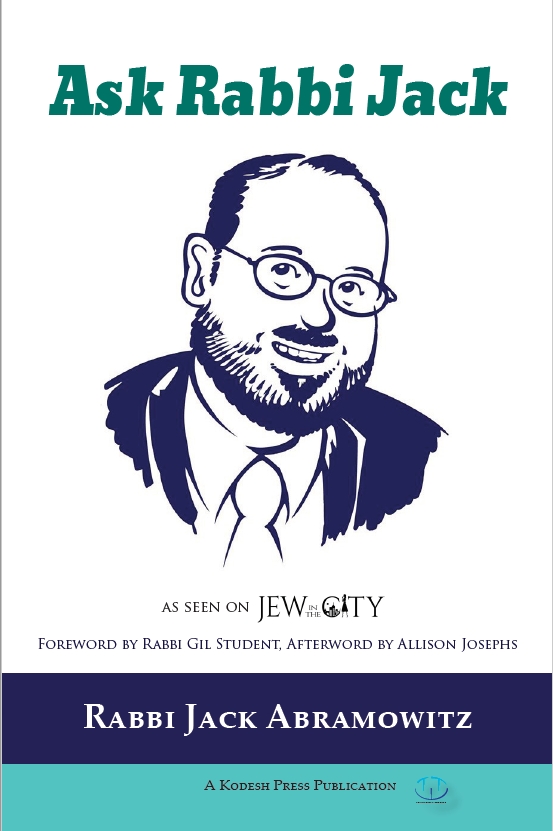Is There One True Way to Tie Tzitzis?
Q. I recently read Rabbi Aryeh Kaplan's book, A Thread of Light on Tzitzith. His books are always wonderful but this one left me confused because there is no standard Halachach for tying the fringes. Indeed, at the end of the book Rabbi Kaplan says that the Kabbalists agree with the Rambam's method but “that is not the custom today.” In fact, there are a myriad of customs for tying the fringes! Why was it not written down in its own Mishna so there would not today be so many variations and customs?
A. If Chazal weren't specific regarding how to tie tzitzis, that's not necessarily an oversight. It doesn't mean that one way is necessarily correct and the others are all wrong. It could be that we're not overtly told how to do it because many ways are acceptable. Different communities then followed the ways their leaders did it.
Q. What perplexes me is why there is no Mishnah devoted just to tying Tzitzith as this Mitzvah is "equivalent to all 613" and yet is one of the most complicated Mitzvahs to construct.
A. Do you know what beraisos are? They're statements of the Tannaim that Rebbi did not include in the Mishnah, but the Gemara invokes them frequently. Are you familiar with the mesechtos katanos, commonly referred to as the "minor tractates"? These are collections of beraisos on a variety of topics that, for whatever reason, weren't included in the Mishnah. One of these is Meseches Tzitzis, so this was indeed a topic of discussion among the Sages of the Mishnah.
Q. In the ArtScroll edition of the Mishna Menachos a comment is made that no details [regarding tzitzis] were written down since “everyone at that time knew how to tie them.” But that comment certainly begs the question as the Mishna was written down for all time so generations into the future would understand the details of the Mitzvahs – especially those given “Halachach Le Moshe Mi-Sinai.” Since this Mitzvah was a commandment from Sinai, did Hashem not show Moshe Rabbeinu precisely how to tie the Tzitzith as an Oral tradition?
A. While I may or may not agree with your understanding of why the Mishnah was committed to writing, ArtScroll’s assertion that some things weren't committed to writing because they were common knowledge certainly has precedent. For example, nowhere in Shas or the Rishonim will you find the halachos of mechitzos. (That's not to say that they didn't exist, just that nobody bothered to codify something so universally understood.) It was only in modern times, when people started pushing back and questioning it, that the lack of textual support became problematic.
Similarly, the lack of details on tzitzis could reflect both a wide range of options as well as the general ubiquity of that knowledge in societies that tended to make their own clothes. (We don't tell people how to weave or dye cloth, just that they can't do these things on Shabbos. Similarly, tying the tzitzis might have been as natural a skill to them as tying our shoes is to us!)
Q. Thank you very kindly for your response to my question.
As an observant Jew I always considered the Mitzvah of Tzitzis the most beautiful of all Mitzvos. Mine are tied according to Chabad. I believed the Chabad custom was the way of tying shown to Moshe Rabbeinu on Sinai by Hashem. So, I was surprised to see that there are so many acceptable ways of tying them and that the Gemara does not settle on a unique structure.
Do you think when Moshiach comes he will show us the unique way of tying the fringes which is hidden from us now or do you believe the many acceptable customs today is as far as it goes?
A. Thanks for your follow-up question. I assume that the many different customs are all acceptable. The Torah gives us broad strokes, but Hashem leaves it to man to figure out the details. I'll give you a mashal. You and I may agree that we need to eat bread, wine and meat on Shabbos, but you may have champagne, raisin challah and brisket, while I have grape juice, matzah and chicken. Did either of us do it “wrong”? Of course not. Halacha tells us to eat but it doesn't micromanage the menu. Similarly, the Torah tells us to put fringes on four-cornered garments; I don't know that that should necessitate doing it only one way.
Is it possible that Moshiach will tell us the One True Way of tying tzitzis? I can't rule that out, but I'd be surprised if that were the case. I'm sure you know that some people put on both Rashi tefillin and Rabbeinu Tam tefillin, and that we blow shofar according to all the various opinions of what the blasts are supposed to sound like, but I've never heard of anyone wearing multiple pairs of tzitzis tied according to different minhagim throughout the day. (If anything, that would be extremely problematic if you thought that some of them might not be kosher!) Similarly, I've heard people speak for or against the modern use of techeiles in tzitzis, but I've never heard anyone advocate that others should change the way they tie the strings.
I hope this helps.
Rabbi Jack's book Ask Rabbi Jack is available from Kodesh Press and on Amazon.com.

